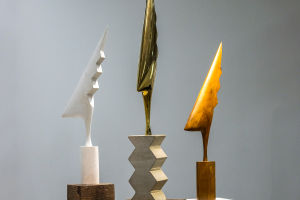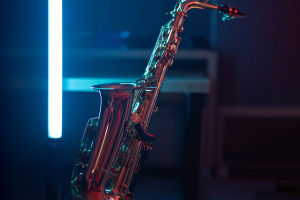Have you ever wondered whether physical sculpture still holds significance in an era dominated by screens, virtual reality, and digital art?
As technology advances rapidly, many question if traditional forms like sculpture can remain relevant or if they will be overshadowed by digital creativity.
Let's dive into why sculpture continues to matter and how it is evolving alongside the digital revolution.
The Enduring Appeal of Tangible Art
Despite the rise of digital media, the tactile and physical nature of sculpture offers something unique. Holding, walking around, or standing next to a three-dimensional artwork creates an immersive experience that screens cannot fully replicate.
Sculpture appeals directly to our senses of touch and space, providing a connection between the viewer and the material world.
This physicality grounds art in reality and invites viewers to engage not only visually but spatially and emotionally. In an age where much of our interaction is virtual, tangible art becomes a precious bridge to real-world experience.
Digital Tools Expanding Sculpture's Possibilities
Rather than competing against digital technology, many sculptors are embracing it as a powerful tool. Techniques such as 3D modeling, computer-aided design (CAD), and 3D printing have expanded the possibilities of sculpture, allowing artists to create complex forms that would be difficult or impossible by hand.
These technologies enable rapid prototyping, precision, and experimentation with new materials. For example, sculptors can now combine digital fabrication with traditional methods, creating hybrid works that push the boundaries of both craft and innovation.
Sculpture Meets Virtual Reality and Augmented Reality
The digital age has introduced exciting new ways to experience sculpture beyond physical objects. Virtual reality (VR) and augmented reality (AR) enable immersive encounters with sculptural art that transcends physical limitations.
Artists can create virtual sculptures that exist purely in digital space or augment physical sculptures with interactive digital elements. This fusion offers viewers fresh perspectives and interactive experiences, bridging the gap between traditional art and cutting-edge technology.
Cultural and Social Relevance in a Digital World
Sculpture continues to play an important role in cultural expression and social commentary. In a world saturated with digital images, physical sculptures can make bold, tangible statements about identity, history, and community.
Public sculptures, memorials, and installations remain powerful tools to engage communities and spark conversations. These physical artworks serve as landmarks, gathering places, and shared cultural memories that digital art alone cannot replicate.
The Sustainability Challenge and Material Innovation
As environmental concerns grow, sculptors are also responding with sustainable practices. New materials such as recycled metals, biodegradable plastics, and eco-friendly composites are being incorporated into sculpture.
Digital technology supports this shift by optimizing material use and reducing waste through precise fabrication methods. This approach aligns with the values of many contemporary artists and audiences who seek harmony between creativity and environmental responsibility.
Expert Views on Sculpture's Future
According to Dr. Emily Stevens, an art historian specializing in contemporary sculpture, "The integration of digital tools in sculpture is not a replacement but an enhancement. Physical sculpture will always maintain its relevance because it addresses human experience in ways digital art cannot fully capture."
Research from the Arts and Technology Institute also highlights that interactive sculptures combining physical and digital elements show higher engagement levels in public exhibitions. This suggests that hybrid forms of sculpture may define the art landscape of the future.
Why Sculpture Still Matters to You
Whether you are an artist, collector, or casual viewer, sculpture offers unique opportunities to experience creativity and culture. It challenges our spatial awareness, invites personal interpretation, and connects us to shared histories.
In a digital world overflowing with images, sculpture's tangible presence can ground us, making art more accessible and meaningful. So, next time you encounter a sculpture, pause and consider the blend of tradition and innovation it represents.
What are your thoughts on sculpture in today's digital age? Do you see it as a vital art form, or do you think its role is changing? Feel free to share your views and keep the conversation going!


